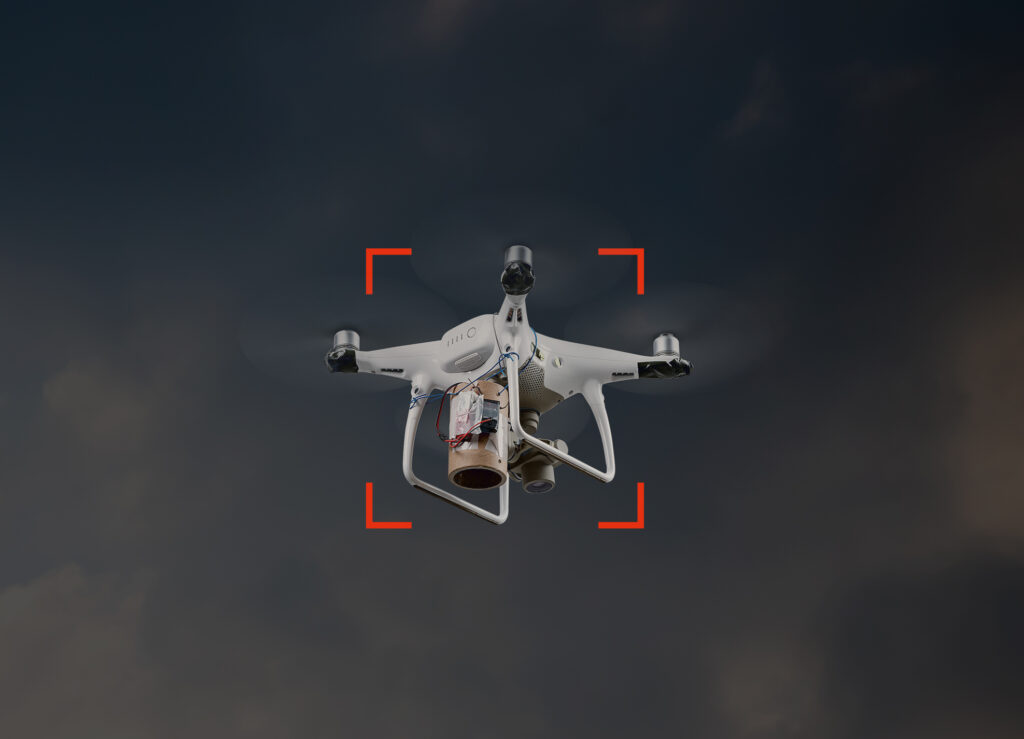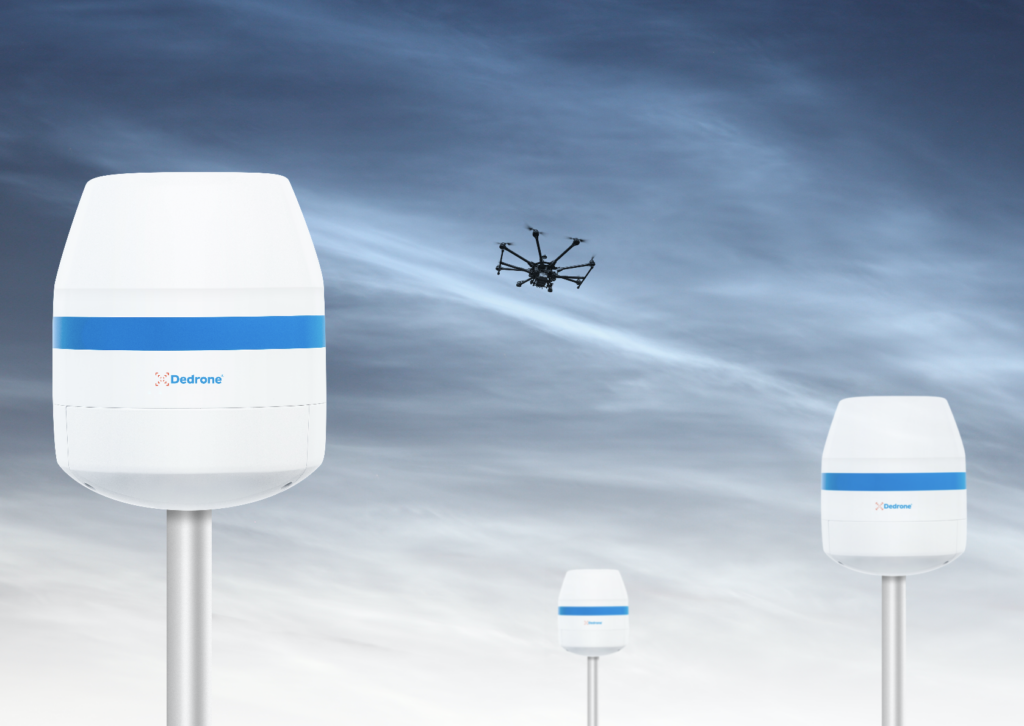Remote ID: Insights from Dedrone


The CMO of Dedrone, a counterdrone/airspace security company, discusses the role of Remote ID in the industry. (Photos: Dedrone)
The FAA’s Remote ID requirements, which mandate drones to broadcast identification information, were expected to go into effect on September 16. The agency has now extended the enforcement date to March 16, 2024. “In making this decision, the FAA recognizes the unanticipated issues that some operators are experiencing finding some remote identification broadcast modules,” the FAA explained.
Take a closer look at the role of Remote ID in our Q&A with Mary-Lou Smulders, CMO at Dedrone—a counterdrone/airspace security company.
Avionics International: From your perspective, what are some of the benefits of Remote ID in terms of safety and security in the drone industry?
Mary-Lou Smulders: Remote ID is basically a drone license plate—broadcasting identification and location information when a drone is in flight. In terms of knowing where drones are in a given airspace, this is a strong step in the right direction. Like a license plate, although the average citizen does not have access to the personal information of the drone’s pilot, authorized governmental authorities can use the Remote ID broadcast to determine the drone pilot’s identity.
Could you elaborate on the critical issues with relying solely on Remote ID as a safety protocol?
Just like bank robbers removing the license plate on their getaway car, the first thing any bad actor will do is disable Remote ID—meaning that any critical infrastructure that relies solely on picking up Remote ID will be completely blind to a drone that isn’t broadcasting in their airspace.
It’s also extremely easy to spoof Remote ID broadcasts; a quick search on the internet search engine of your choice will bring up pages of videos on how to do it. This means that a bad actor that’s even remotely tech-savvy will then be able to hide a real drone in a swarm of fake broadcasts or otherwise disguise the location of their drone by putting its broadcast elsewhere.
In addition, recreational drones below 250 grams do not have to comply with Remote ID rules as of this writing. While that’s just a little more than half a pound, commercially available drones like the DJI Mini 3 Pro come under this weight limit—and can still record video in up to 4K resolution for reconnaissance purposes or recording events.
Finally, these regulations rely heavily on compliance by drone pilots. Even if they have no plans to do anything bad with their drones, if they haven’t registered with the FAA, then they likely don’t know about the Remote ID requirements, and their drones may not have a broadcast beacon installed if they have a drone manufactured before December of last year.
Ultimately, layers of protection are needed to keep an airspace secure and enable good drones to operate while unauthorized drones can be identified quickly.

What is the impact of Remote ID on the commercial drone industry, specifically in terms of operations and business applications?
It is a huge step forward in terms of unlocking the real potential of drones commercially. By requiring all non-recreational drones (even those below the 250g weight limit) to broadcast Remote ID, it will ultimately be easier to keep the skies free of aerial collisions and more efficiently pilot drones as first responders or for deliveries in active airspaces. The regulations are slowly but surely catching up with the technology, and we’re getting closer to being able to capture the productivity that productive drone usage offers.
Dedrone claims to have virtually eliminated false positives in drone detection. How have you achieved this level of accuracy and reliability?
At the heart of all of our solutions is DedroneTracker.AI, our command and control (C2) airspace security platform, which utilizes a sophisticated AI engine to perform behavior modeling analytics as well as true sensor fusion on the inputs it receives. Using our drone library of nearly 300 different drone types and being specifically built to be hardware-agnostic, DedroneTracker.AI incorporates a variety of inputs for drone detection and compares it with its vast database of drone data—for both regularly manufactured and DIY drones—to determine whether or not something is a drone, where it is, and if it poses a threat. Every time a drone incursion occurs, DedroneTracker.AI gets smarter.
Are there any current efforts at Dedrone that you could share details about?
Most recently, we launched DedroneTactical, our solution for counter small uncrewed aerial system (UAS) response in rapidly evolving expeditionary situations. We are also continuing to expand our already industry-leading customer installed base of over 500 active sites—we are up to usage in 30 countries and five of the G-7 nation governments; 190 critical infrastructure sites; 40 airports; 60+ stadiums; 15+ US federal entities and 20+ non-US governments.
We also offer Remote ID detection through DedroneTracker.AI to continue to keep the airspaces safe.

How does Dedrone envision contributing to the broader discussions on drone safety and regulations in the industry?
We firmly believe that all stakeholders in the industry need to have a voice in order to design regulations that are built for the technology of today and tomorrow. As part of that, we are participating in FAA testing for counter-drone technology at airports, and we are also a member of the FAA’s Uncrewed Aerial System (UAS) Detection and Mitigation Systems Aviation Rulemaking Committee (ARC). We are offering our insights on what is needed to make our skies safe for good drones while preventing negative drone incidents around the country.
Are there any trends or technologies in the drone industry that you think are particularly promising?
Flying Beyond Visual Line of Sight (BVLOS) and, within that, Drone as a First Responder (DFR) is one of the most impactful drone applications that we see coming down the pipeline in the industry. Currently, a drone must be in someone’s line of sight to be flown—so law enforcement, for example, has to station people on rooftops to continue monitoring a drone in flight. Waivers to fly BVLOS are extremely difficult to obtain, but we believe that technology can solve this problem and it will steadily become easier to obtain the required waivers for BVLOS flights.
With that capability, drones can play a huge role as first responders. For example, right now, if there’s an accident on the highway, police, the fire department, and an ambulance are automatically dispatched. Soon, a drone [will be able to] get there first, and relay whether or not all of these emergency services are needed. In more volatile situations, a drone can also provide a bird’s-eye view of the incident and offer law enforcement or emergency responders a better understanding of the situation before they arrive, making it safer for everyone.
—————
Boost Internet Speed–
Free Business Hosting–
Free Email Account–
Dropcatch–
Free Secure Email–
Secure Email–
Cheap VOIP Calls–
Free Hosting–
Boost Inflight Wifi–
Premium Domains–
Free Domains





